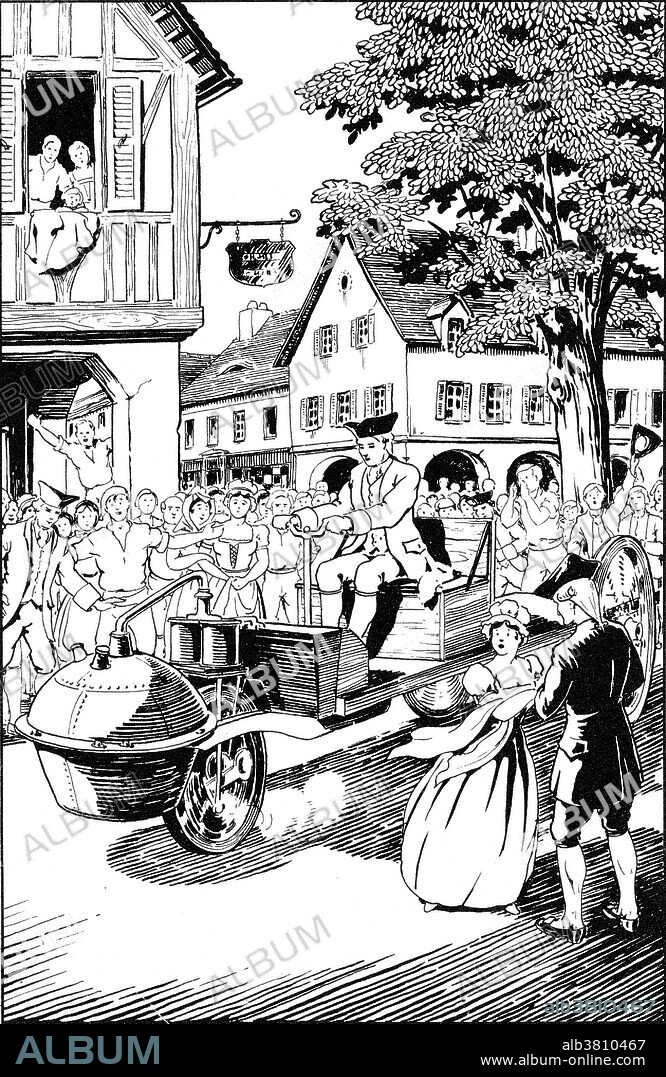alb3810467
Cugnot Steam Powered Carriage, 18th Century

|
Ajouter à une autre Lightbox |
|
Ajouter à une autre Lightbox |



Avez-vous déjà un compte? S'identifier
Vous n'avez pas de compte ? S'inscrire
Acheter cette image

Titre:
Cugnot Steam Powered Carriage, 18th Century
Légende:
Voir la traduction automatique
Nicolas-Joseph Cugnot (February 26, 1725 - October 2, 1804) was a French inventor. He is known to have built the first working self-propelled mechanical vehicle, the world's first automobile. He trained as a military engineer. He experimented with working models of steam-engine-powered vehicles for the French Army, intended for transporting cannons, starting in 1765. He was one of the first to employ successfully a device for converting the reciprocating motion of a steam piston into rotary motion by means of a ratchet arrangement. A small version of his three-wheeled fardier à vapeur (steam dray) ran in 1769. The vehicle had two wheels at the rear and one in the front that supported the steam boiler and driving mechanism. The power unit was articulated to the trailer and steered from there by means of a double handle arrangement. One source states that it seated four passengers and moved at a speed of 2.25 miles per hour. The vehicle was reported to have been very unstable due to poor weight distribution which would have been a serious disadvantage seeing that it was intended that the fardier should be able to traverse rough terrain and climb steep hills. After running a small number of trials the project was abandoned and the French Army's experiment with mechanical vehicles came to an end. In 1772, King Louis XV granted Cugnot a pension of 600 livres a year for his innovative work.
Crédit:
Album / Science Source / New York Public Library
Autorisations:
Modèle: Non - Propriété: Non
Questions sur les droits?
Questions sur les droits?
Taille de l'image:
2700 x 4153 px | 32.1 MB
Taille d'impression:
22.9 x 35.2 cm | 9.0 x 13.8 in (300 dpi)
Mots clés:
 Pinterest
Pinterest Twitter
Twitter Facebook
Facebook Copier le lien
Copier le lien Email
Email
